Business
10 Effective YouTube Marketing Strategy Tips
Published
3 years agoon
By
Kai Kelis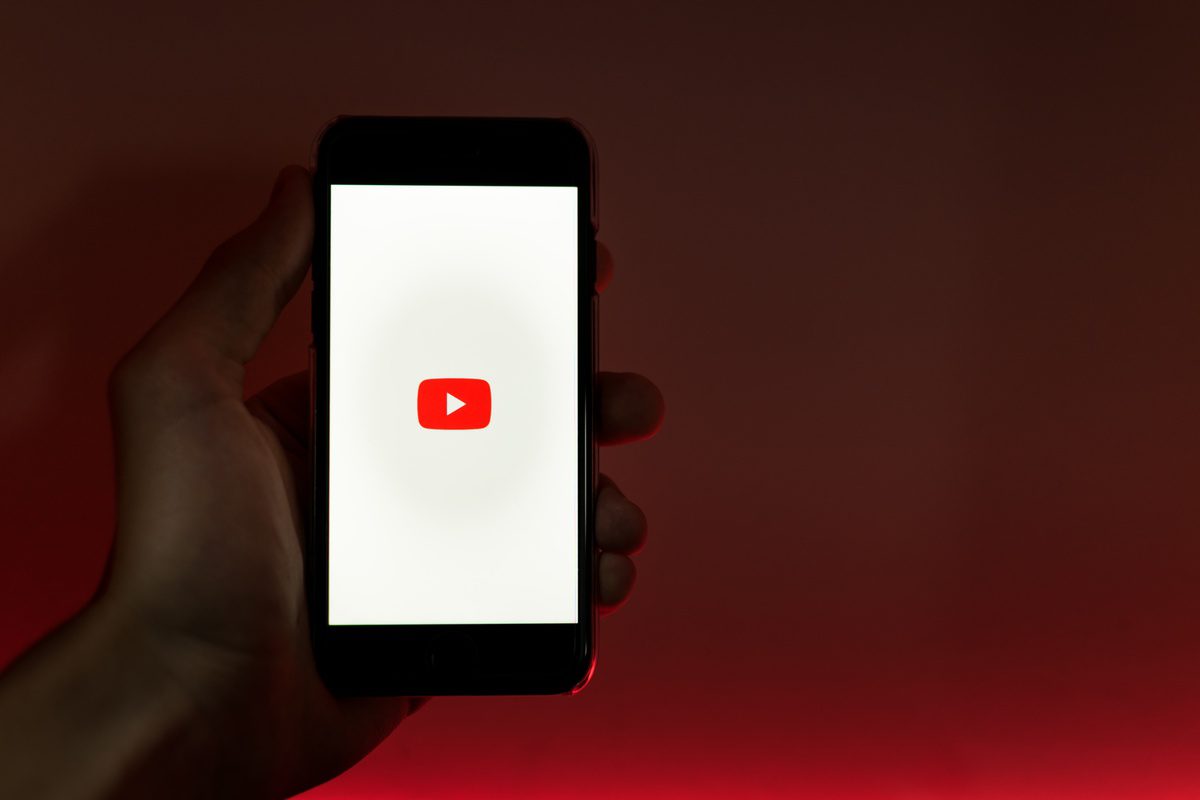
Did you know that the biggest video platform gets over 694,000 hours of video broadcasts every minute? YouTube also receives an average of 62 percent of user visits every day. This widely-used network allows brands to promote their offers through fun and entertaining content. Plus, brands can earn by experimenting with several YouTube features. Here’s a list of 10 tips for an effective YouTube marketing strategy.
Why Brands Should Start a YouTube Advertising Strategy
Before we proceed to the tips on how to succeed in YouTube advertising, here are why you must start promoting your brand on YouTube.
- Improves search visibility. YouTube has over two billion monthly active users, which means you’ll reach the right audience if you integrate SEO techniques to make your content easily searchable. Also, 94 percent of videos on search results are from YouTube, making this the biggest platform for this type of media.
- Increases brand awareness. Diversifying marketing strategies is vital if you’ve been banking on blog marketing to promote your brand. Some users might frequently use YouTube instead of other social media networks. This allows you to tell your target audience about your brand and offers.
- Generates leads. YouTube is an effective platform where you can generate new leads, provided that you include clear calls to action. Create a sales funnel where you can nurture leads from awareness and interest to desire and action.
- Drives sales and traffic. YouTube provides shopping features that allow advertisers to maximize their sales. And 81 percent of advertisers attest that the platform has helped increase sales for their business.
10 YouTube Marketing Strategy Tips
Succeeding in YouTube advertising doesn’t have to be an uphill battle. It may require a massive chunk of your marketing budget. However, by integrating these 10 easy tips, you can grow your following and increase company revenue without breaking the bank.
1. Define your target audience
It’s essential to know who you’re making videos for. Otherwise, your YouTube marketing efforts are futile. Use social listening, research, and competitor analysis to understand what videos your target audiences are watching.
Ask yourself these questions:
- Are your viewers primarily males or females?
- What kind of YouTube channels do they subscribe to and watch?
- What kind of content are they likely interested in?
- What actions do they take after watching videos?
- How old are your audiences?
- Where do they live?
Don’t be limited to these questions. Asking yourself and your team as many questions as possible to define your YouTube target audience will determine who they are better.
2. Conduct a competitor analysis

Knowing who you’re competing against enables you to fill in the gaps. Every business has strengths and weaknesses, and targeting them lets you get ahead. Research your competitors’ YouTube channels and see how they engage with audiences. How often are they publishing content, and what types of content get the most engagement? More importantly, how are they dressing up their YouTube channels to keep them on-brand? Don’t copy and do your YouTube marketing strategy better.
3. Stay on-brand
Staying on-brand is crucial when marketing on YouTube. Ensure that your channel follows your brand guidelines. Align your profile picture, banner, video thumbnails, URLs, and more. Maintaining branding consistency is essential to instill top-of-mind awareness.
4. Find a unique niche
If you’re establishing a business from scratch, you’re probably not a pioneer in that niche. However, consider how your brand can stand out by narrowing the industry and considering a unique niche. Another way to stand out on YouTube is to create quality, relevant, and entertaining videos that your audience will love.
5. Publish regularly
The frequency of your published YouTube videos depends on your goals. If you wish to increase brand awareness fast, publishing videos a few times a week is recommended. If you want to generate leads, you can post at least once a week. However, it’s always a good idea to publish more every week if you can.
6. Promote your channel
A successful YouTube marketing strategy requires your all-out effort. Cross-promoting your channel on various platforms is one technique to get traction. Use that to your advantage if you have good followership on other social networks, like Facebook or Twitter.
7. Write SEO-centric descriptions and titles

You can rank your videos on search engines by doing SEO best practices, such as using relevant keywords on titles and descriptions, improving video tags, using search filters, checking YouTube studio to see if your videos have errors.
8. Leverage YouTube Shorts
YouTube Shorts is a new feature that banks on short-form videos, crucial in today’s landscape with a declining attention span. You can create 60-second videos to creatively introduce your products and services, which is also suitable for mobile viewing for your on-the-go audience.
9. Work with YouTube influencers
Influencer marketing still does an excellent job of increasing your brand’s foothold in your industry. Selecting the right influencers with a relevant target audience is critical for success. Be creative in your influencer marketing videos. You can try tutorials, behind-the-scenes snippets, influencer headquarters tours, unboxing videos, or contests.
10. Engage with your audience
YouTube considers audience engagement when ranking content. The higher the audience engagement rate, the more your videos rank in search results. Ask your viewers for comments, feedback, likes, and follows. Interact with them and reply to every comment if you can.
Also, don’t only focus on positive feedback. Address negative feedback nicely to show you are an empathetic and genuine brand prioritizing customer satisfaction. Actively engaging with your audience also helps build a community that fosters motivation, inspiration, and creativity—whatever the industry.
Conclusion
An effective YouTube marketing strategy doesn’t only rely on video content. It gets a little boost from your advertising efforts and intelligent techniques that capture the audience’s attention. Finally, ensuring that you’re creating the right and catchy calls to action is essential to make users act. Every video content you publish should lead viewers to the next stage of your sales funnel. Nurturing relationships is a way to gain regular and loyal customers, so be an authentic brand that people can rely on.
You may like
Business
Top 10 Video Marketing Agencies You Must Check Out in 2026
Published
2 days agoon
December 19, 2025
If you’ve been following the latest marketing trends, you would know that video marketing is popular. Factors like lower costs, the availability of video platforms, and the rise of social media influencers helped change how consumers interact with video content. Read on to learn the best video marketing agency to help you leverage the power of video.
1. Vireo Video
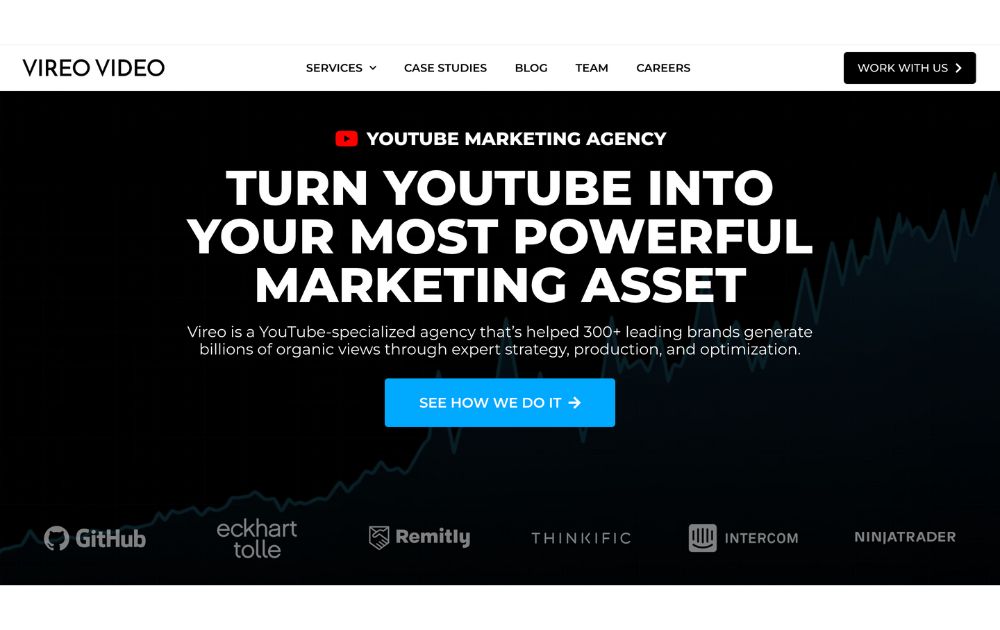
If you need an expert in Youtube marketing, be sure to check the features of Vireo Video. The platform specializes in Youtube marketing and offers various video-related services, such as Youtube content strategy, SEO, and advertising.
Vireo Video is trusted by brands and influencers like bestselling author Eckhart Tolle. Vireo assisted in the optimization of his videos and helped grow his YouTube channel. As a result, his channel has 250 million views and 1.6 million new subscribers.
Key Services:
- Influencer marketing
- Video optimization
- Targeted YouTube advertising placements
- Strategy development
2. NinjaPromo
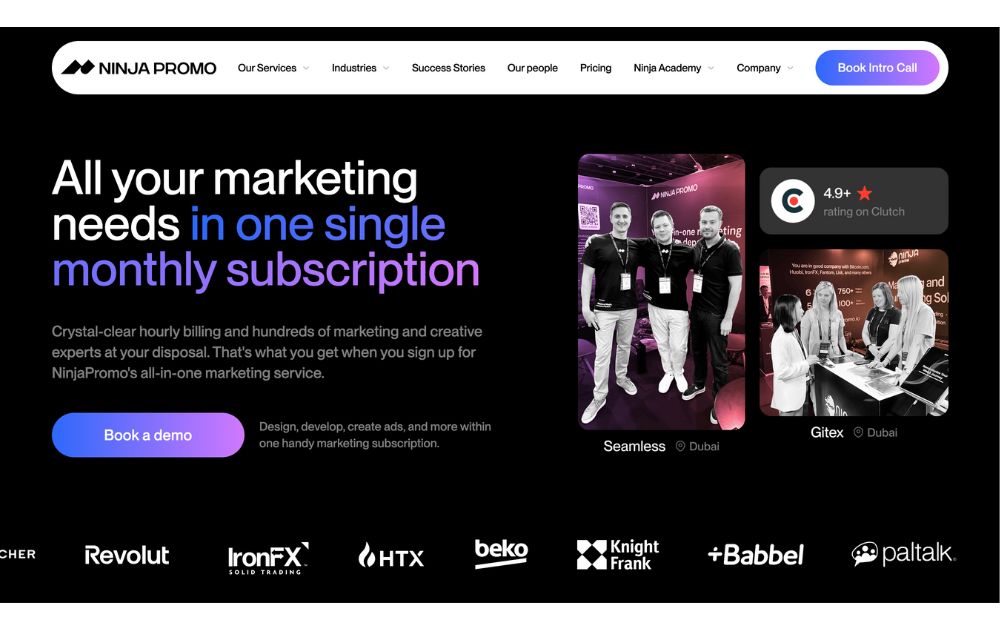
Video marketing is one of the many services offered by the digital marketing agency NinjaPromo. If you’re looking for a perfect partner to assist you in reaching your desired audience quickly, NinjaPromo is one of the best agencies to work with. The company can help you create creative, engaging, and practical videos to promote your brand and increase your online presence.
Key Services:
- Video Production
- Consultation
- SEO optimization
- Explainer videos
- Event and product videos
- Tutorials
3. Moburst
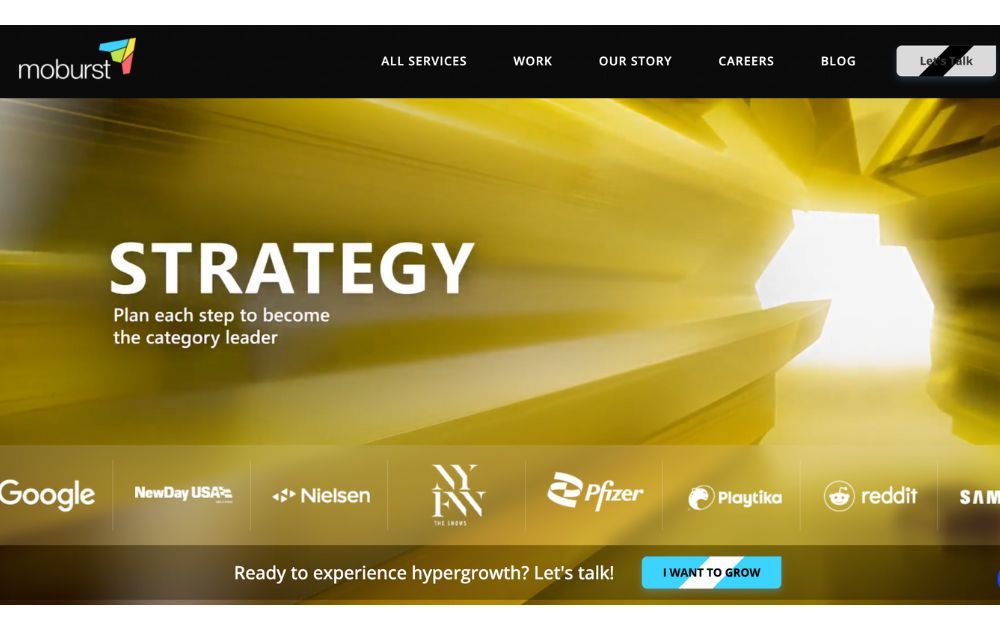
Moburst is a mobile and digital marketing agency that specializes in helping businesses grow their mobile apps. They offer different services to enable enterprises to improve their mobile app performance and increase user engagement. One of its clients is Samsung, which Moburst helped achieve +1,400% growth from downloads to social.
Key Services:
- App Store Optimization
- Video production
- Mobile User Acquisition
- Mobile App Analytics
- Mobile App Design and Development
- Mobile App Retargeting
4. Voy Media
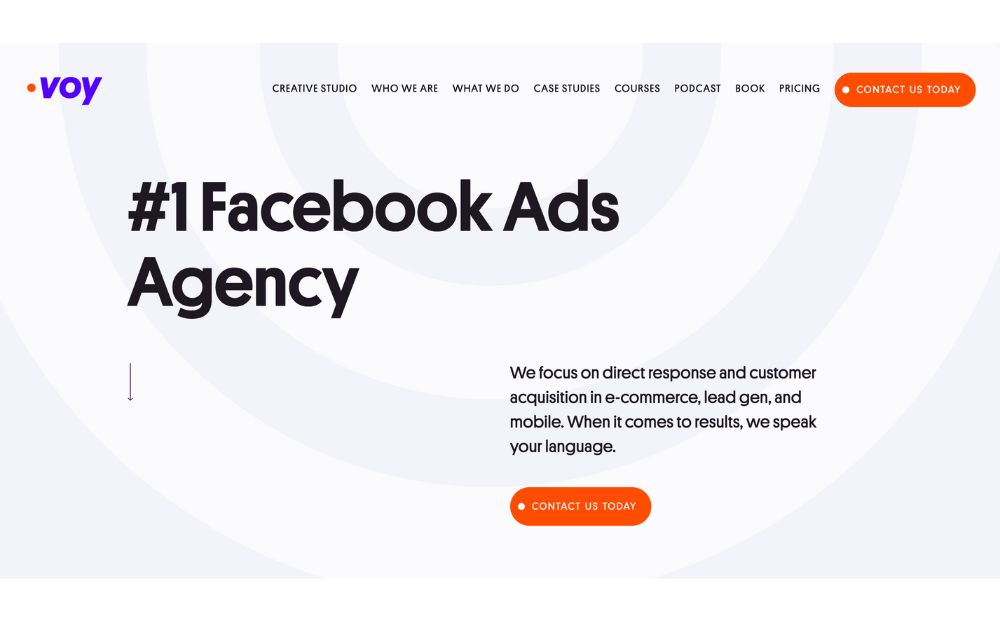
Trusted by big brands like Lacoste, Voy Media is a full-service agency offering various marketing and creative services. Their services are designed to help businesses grow their brand. Likewise, the agency helps them generate leads and increase conversions through social media platforms. Voy Media also ensures its clients receive the necessary support by assigning a dedicated account manager.
Key Services:
- Video editing and production
- Product and lifestyle photography
- Graphic design and illustration
- Full studio production with talent and script
5. Pop Video
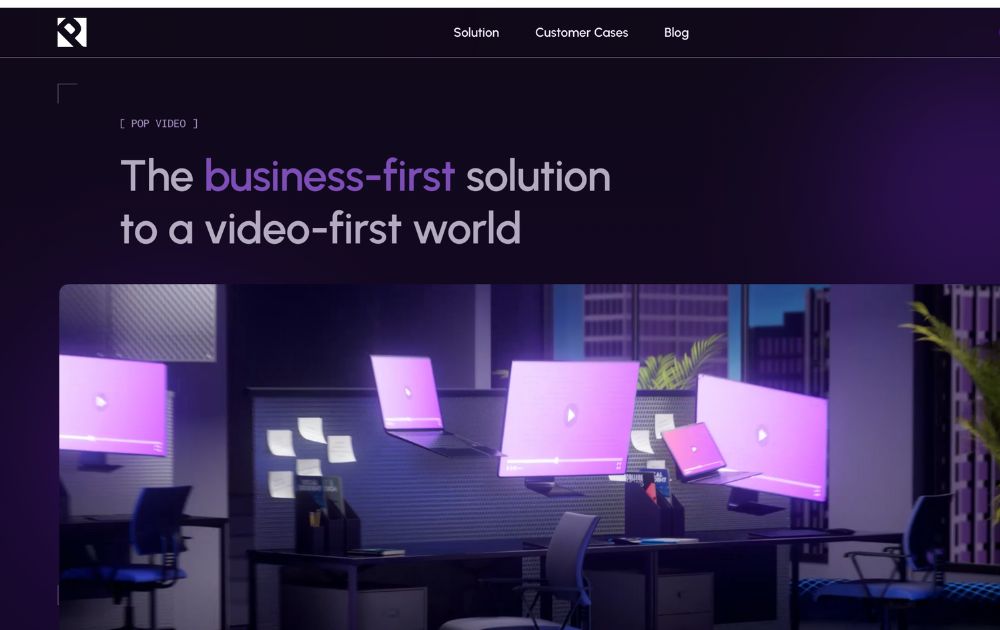
Pop Video was established in 2010 in Houston, Texas. They describe themselves as a business-first solution for a video-first world. Pop Video has a team of visual content creators with a specialization in video production and visual content marketing.
The agency has worked with various clients across different industries, including healthcare, technology, retail, and finance. Some of its notable clients include Microsoft, Adidas, and Coca-Cola.
In addition to its core video production services, Pop Video provides consulting and training services to help businesses develop their video marketing strategies and produce their video content in-house.
Key Services:
- Video Marketing
- Video production
- Animation
- Content creation
- Social media optimization
6. Epipheo
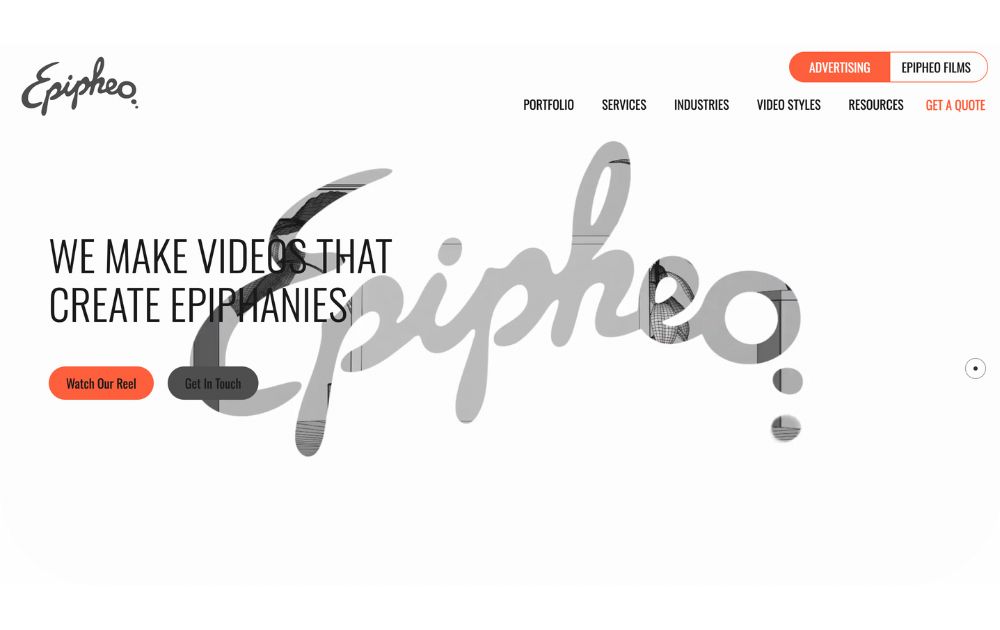
If you need help with educational videos, explore the services of Epipheo. Epipheo is a video marketing agency that creates animated explainer videos and other visual content to assist companies, organizations, and individuals in connecting with their audience effectively.
Key Services:
- Social video ads
- Storytelling testimonial videos
- Animated explainer videos
- Live action videos
- Strategy and consulting
7. Early Light Media
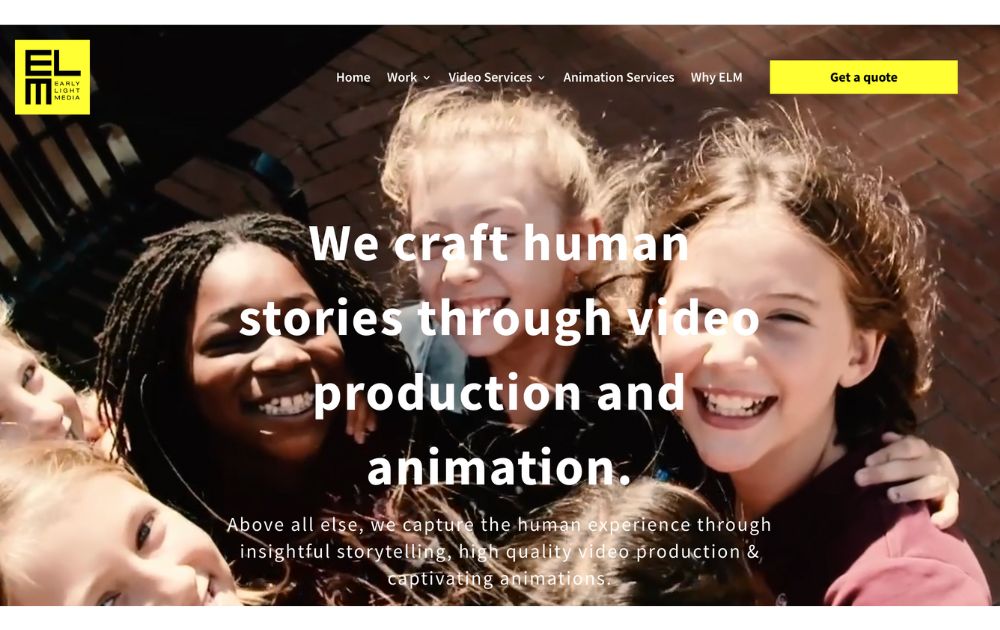
Early Light Video is a full-service video production company that creates high-quality video content for businesses, nonprofits, and individuals. The agency is known for delivering top-notch video content that meets its clients’ needs. It was founded in 2013 by a team of Emmy Award-winning creative directors, with offices in Baltimore and Washington, DC.
Key Services:
- Video production
- Post-production
- Animation
- Voice-over casting
- Music Licensing
8. Indigo Productions
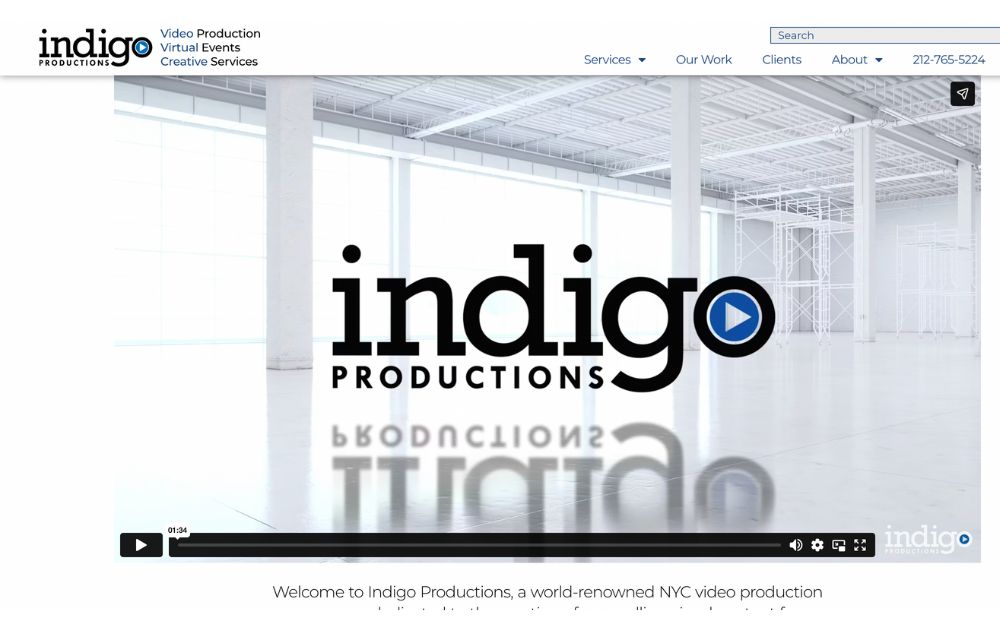
Indigo Productions is a full-service video production company based in New York City. They specialize in creating high-quality videos for corporate clients, advertising agencies, and individuals. Their team of scriptwriters, directors, producers, hair and make-up artists, and location scouts will handle all the logistics.
Key Services:
- Promo videos
- Web commercials
- Music videos
- Movie trailers
- Documentaries
9. LAI Video
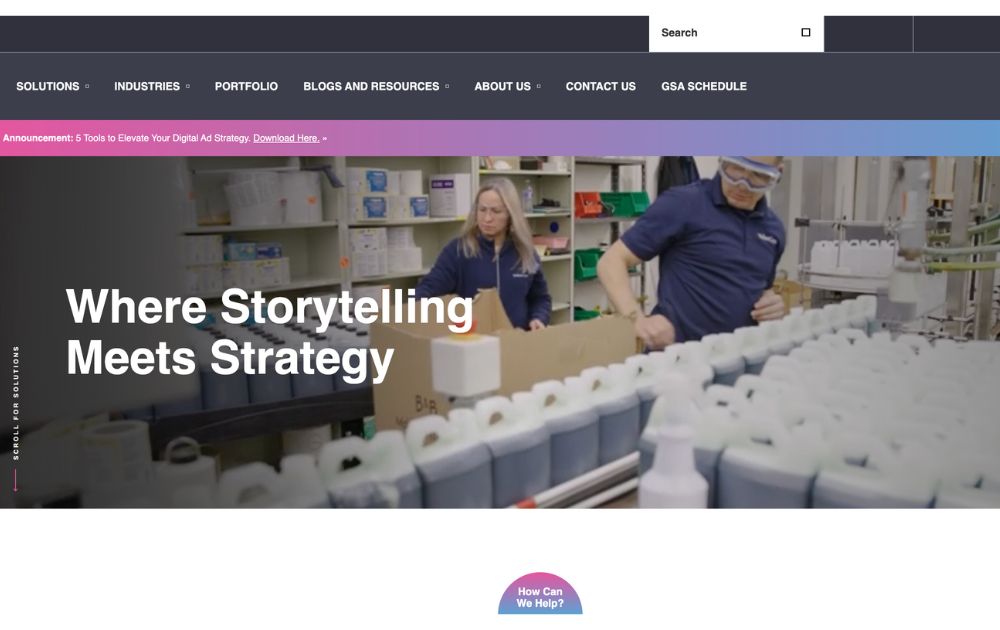
LAI Video is a Washington, DC-based boutique video production company specializing in creating visual stories that inspire and engage audiences. The company was established in 2013 and has become a leading video production agency in the DC metro area.
LAI Video has worked with various clients, including National Geographic, The World Bank, Georgetown University, and The Smithsonian Institution. Their skilled team of filmmakers, animators, editors, and producers works closely with clients to ensure that each video project meets their specific goals and objectives.
Key Services:
- Corporate videos and commercials
- Video communication campaigns
- Branding
- Video animation
- Marketing storytelling
10. SparkHouse
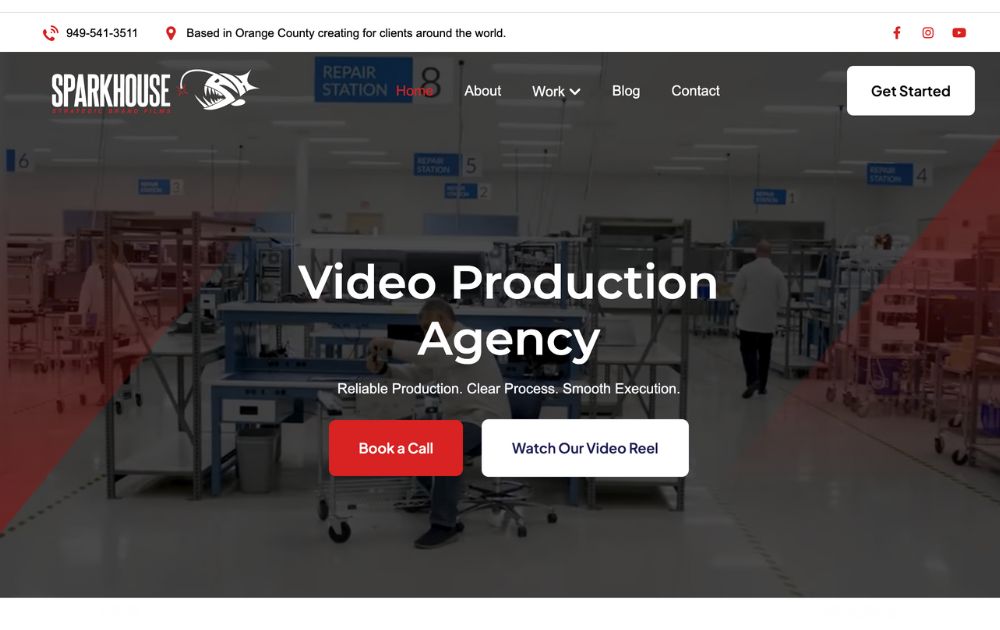
SparkHouse is a video production company based in Minneapolis, Minnesota, specializing in creating high-quality video content for businesses and organizations. The company was founded in 2013 by filmmakers and storytellers passionate about creating visually stunning and emotionally compelling videos.
SparkHouse has worked with various clients, including Target, 3M, Best Buy, and General Mills. Their talented filmmakers, animators, writers, and producers work closely with clients to ensure each video project is customized to their unique needs and objectives.
Key Services:
- Brand Videos
- Corporate Videos
- Animation
- Event Videos
- Social Media Videos
- Documentary Films
Which Types of Videos Do You Get from a Video Marketing Agency?
A video marketing agency typically provides various video types, each with a specific purpose and target audience. Below are the common types of videos you can request from a video marketing agency.
- Brand videos
- Explainer videos
- Corporate videos
- Testimonial videos
- Social media videos
- Live stream videos
- Case studies
- Reviews
- Tutorials
Conclusion
Video marketing is essential for businesses looking to engage their audience, build brand awareness, and drive conversions. That said, the competition will only continue to grow, making working with a reliable video marketing agency more critical than ever.
Featured Image Credit: Photo by fauxels from Pexels

TLDR: Penji is unlimited graphic design for a flat fee; Colab is digital transformation focused on brand storytelling; Jacob Tyler is a full-service brand strategy powerhouse; Micro1 is AI-powered engineering and tech design.
Did you know that California’s creative economy is worth more than $500 billion to the state’s economy? That’s a lot of creative minds at work!
The search for the best design agency in Los Angeles can be quite daunting. After all, 1 in 6 people in L.A. work in a creative field. It’s no surprise there are thousands of candidates that would be an ideal extension of your dream team.
If your business requires a rebrand or continuous graphic design efforts you can rely upon day in and day out, then finding the right design agency will help your business thrive. You need more than just a creator, you need someone to bring your vision to life.
To ease your research, here are the top four contenders as the best graphic design agency in Los Angeles.
1. Penji
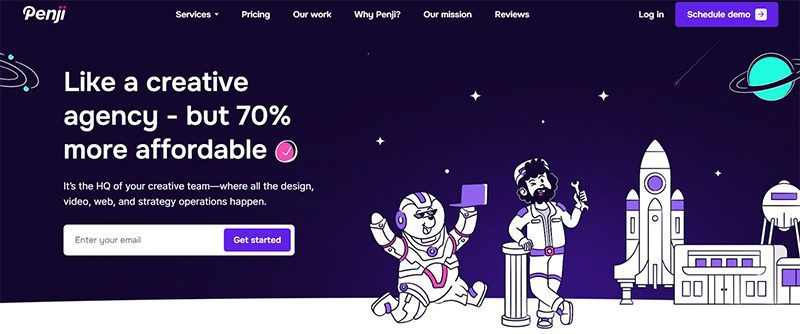
The future of design has arrived. Seeking a design service upon demand? Penji is your new graphic design service that acts as an extension of your team.
No hidden costs, no missed deadlines and For a monthly flat-fee subscription service, you will have access to the top 2% of designers in the world with little more than a submission request for us to take it from there!
This is perfect for marketers or agencies seeking cohesive quality over hiring needs.
Pros:
- Unlimited Revisions: We keep refining until you are 100% happy.
- Flat Monthly Rate: No surprise fees or hourly billing.
- Fast Turnaround: Most drafts are delivered within 24-48 hours.
- Vetted Talent: We hire the top 2% of designers, so you don’t have to vet freelancers.
Cons:
- Subscription-based: This model is best for those with ongoing design needs rather than one-off projects.
2. Colab

When it comes to a design as a service partner with digital transformation as its focus, Colab is the place to be.
A location-based agency that takes a data-led transformational, story-driven approach to seamless UX, Colab is where brands/agencies should go when seeking to merge strategy creation/implementation through execution from start to finish—especially with websites that merge look/functionality with success.
Pros:
- Strategic Focus: They rely heavily on data to drive design decisions.
- Local Expertise: A deep understanding of the LA market.
- Full-Service: They handle everything from the backend code to the frontend visuals.
Cons:
- Higher Cost: As a traditional agency, their project fees will be significantly higher than a subscription model.
- Timeline: Large-scale digital transformation projects can take months to complete.
3. Jacob Tyler
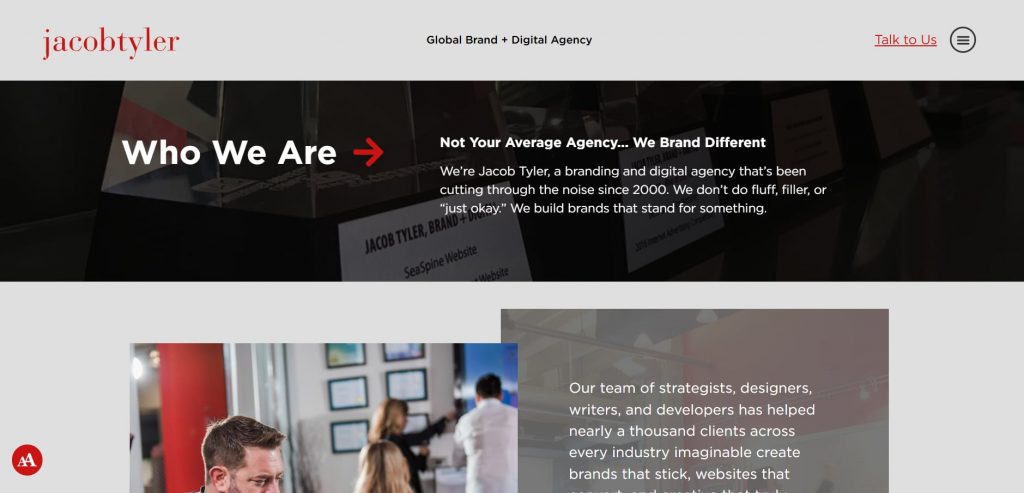
For nearly 20 years, Jacob Tyler has existed in the California Brand Design Agency game as a powerhouse. This full-service digital communications agency will trim the fat from your ultimate brand strategy to hone in on what you truly need moving forward.
If you’re looking for a major professional facelift with omni-channel marketing and integrated deep brand strategy, Jacob Tyler is a heavyweight brand—literally!—who’s worked with everyone from startups to credit unions!
Pros:
- Experience: Over 20 years of experience in the industry.
- Comprehensive: They can handle your entire marketing funnel, not just the design.
- Award-Winning: A strong portfolio of successful, high-profile campaigns.
Cons:
- Project Minimums: They typically work with project budgets starting at $10k+, which may price out smaller startups.
- Complexity: Their comprehensive approach might be overkill if you just need graphic design execution.
4. Micro1

Micro1 takes creative human design efforts and merges them with AI functionality. As a critical graphic design agency, they use artificial intelligence for beauty and brains on websites/apps like never seen before!
Micro1 builds engineering teams behind major apps (think Tinder, Uber…) so if you’re a tech-based startup in need of cutting edge product development based on extraordinary UX/UI look no further!
Pros:
- Tech-Forward: Ideal for SaaS and app-based companies.
- AI Integration: Uses AI to enhance efficiency and speed.
- Scalable: Great for ambitious startups looking to grow their engineering and design capabilities simultaneously.
Cons:
- Niche Focus: They are heavily focused on product and app development, rather than general marketing graphics.
- Development Heavy: If you don’t need coding or software engineering, their full suite of services might not apply to you.
Credit for Cover image: Photo by Mikael Blomkvist on Pexels
Business
What’s the Best Graphic Design Service for Ongoing Marketing?
Published
3 days agoon
December 17, 2025
One constant part of managing a business is marketing: it’s a never-ending process. So, if you need a steady supply of social media posts, ad campaigns, and other visuals, you need to work with a reliable graphic design subscription service. Here are our top five:
1. Penji

Who doesn’t want unlimited graphic design for a fixed monthly fee? Penji offers plans with unlimited revisions, access to a team of design experts, fast turnaround times, and cost-effective pricing. This is the best option for business owners, marketers, agencies, and internal teams to get social media graphics, custom illustrations, logos, web and app designs, and many more.
2. Flocksy
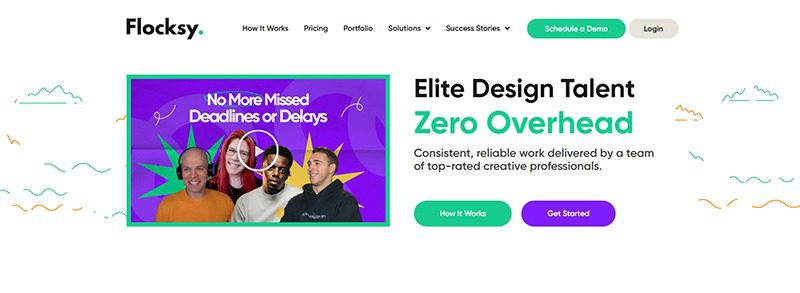
Next, having a dedicated team of creatives without worrying about overhead expenses makes Flocksy an excellent design solution for marketers. Like Penji, it offers flat-rate pricing that’s predictable and suitable for businesses of all sizes. It provides graphic design services, video editing, motion graphics, and more.
3. Designity
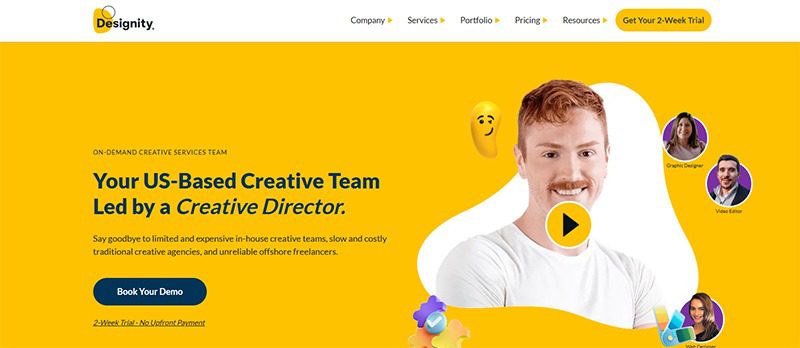
Offering you the guidance of a US-based creative director, Designity is a graphic design service platform that’s ideal for modern businesses. It can provide you with a wide range of services, including motion graphics, videos, digital ads, social media graphics, and mobile app design and coding, among others.
4. ManyPixels

With a fast turnaround time for their unlimited design requests, ManyPixels is another reliable creative service platform for marketers. It provides ongoing support for your marketing efforts, including branding, illustrations, social media posts, print design, and video editing, to name a few.
5. Superside
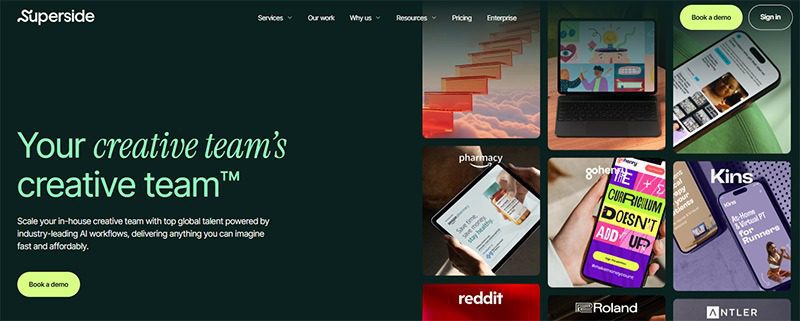
Another creative-as-a-service platform, Superside, suits every size business and marketing team. It is ideal for those with high-volume design needs and a larger enterprise marketing network. You can get a wide array of graphic design services, including ad creatives, branding services, illustrations, and even eBooks and report designs.
21 bit casino bonuscode

Top 10 Video Marketing Agencies You Must Check Out in 2026
Casino mobile apps

The Top 8 Webinar Platforms For Your Next Virtual Event or Demo
Hash casino
Bizzo casino deposit bonus
Geheime casino tricks de erfahrung

Top 10 Presentation Software To Use in 2026

Top 10 Video Marketing Agencies You Must Check Out in 2026

Top 10 Social Media Scheduler Apps to Automate Your Postings

How Marketing Optimization Tools Level Up Your Marketing Game

The Top 8 Webinar Platforms For Your Next Virtual Event or Demo

What’s the Best Unlimited Graphic Design Subscription Platform?

What’s the Best Graphic Design Service for Long-Term Projects
Trending
- Business2 days ago
Top 10 Video Marketing Agencies You Must Check Out in 2026
- Technology2 days ago
The Top 8 Webinar Platforms For Your Next Virtual Event or Demo
- cresuscasino4 days ago
Cadoola casino review
- Business4 days ago
What’s the Best Design Agency in Chicago
- azurcasino4 days ago
888 casino willkommensbonus
- Business3 days ago
What’s the Best Graphic Design Service for Ongoing Marketing?
- leonbetcasino4 days ago
Doubledown casino free chips bonus collector
- cresuscasino4 days ago
Casino chateaufarine
- Business3 days ago
What’s the Best Design Agency in Los Angeles?
- cresuscasino4 days ago
Casino 400








